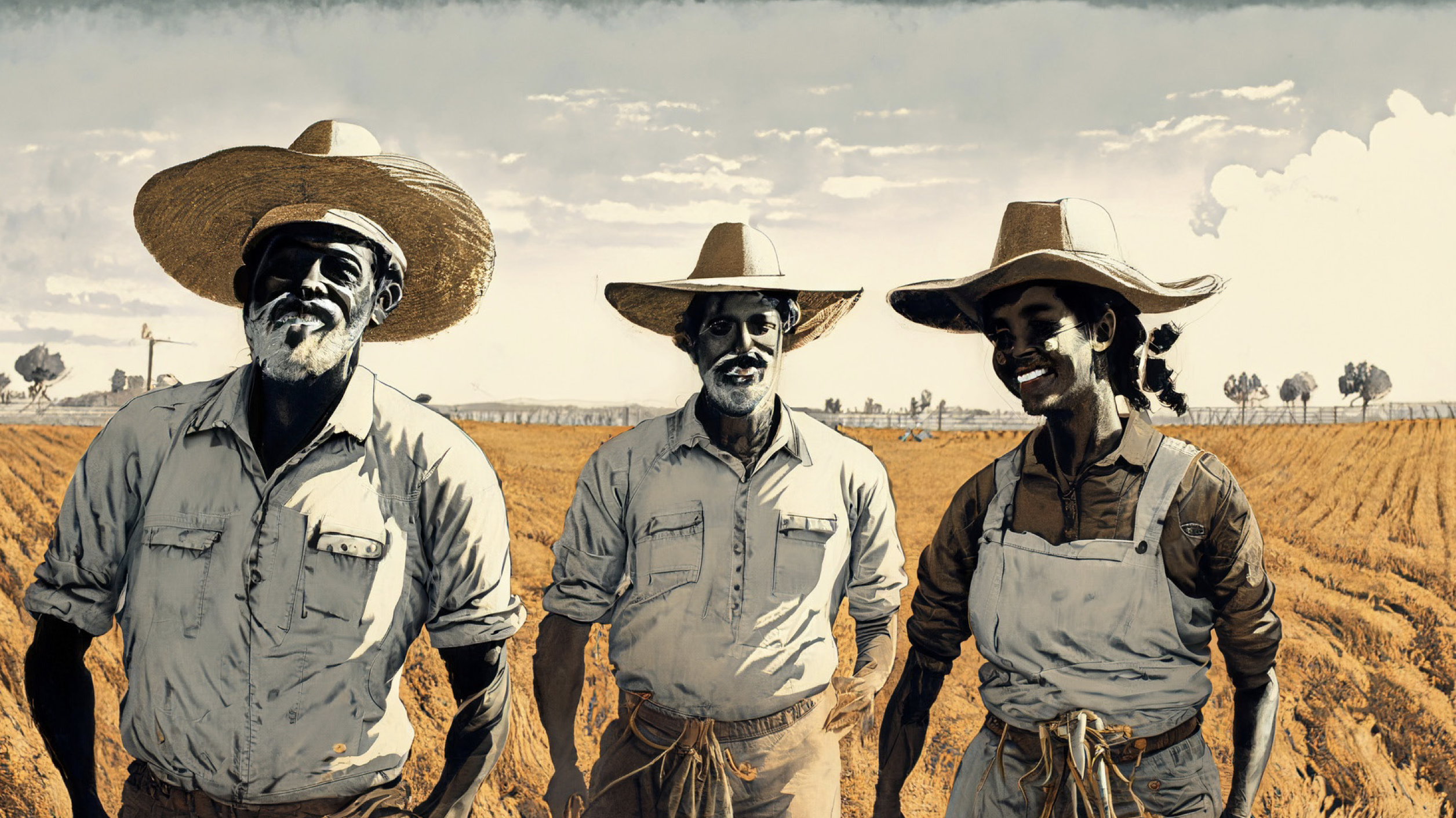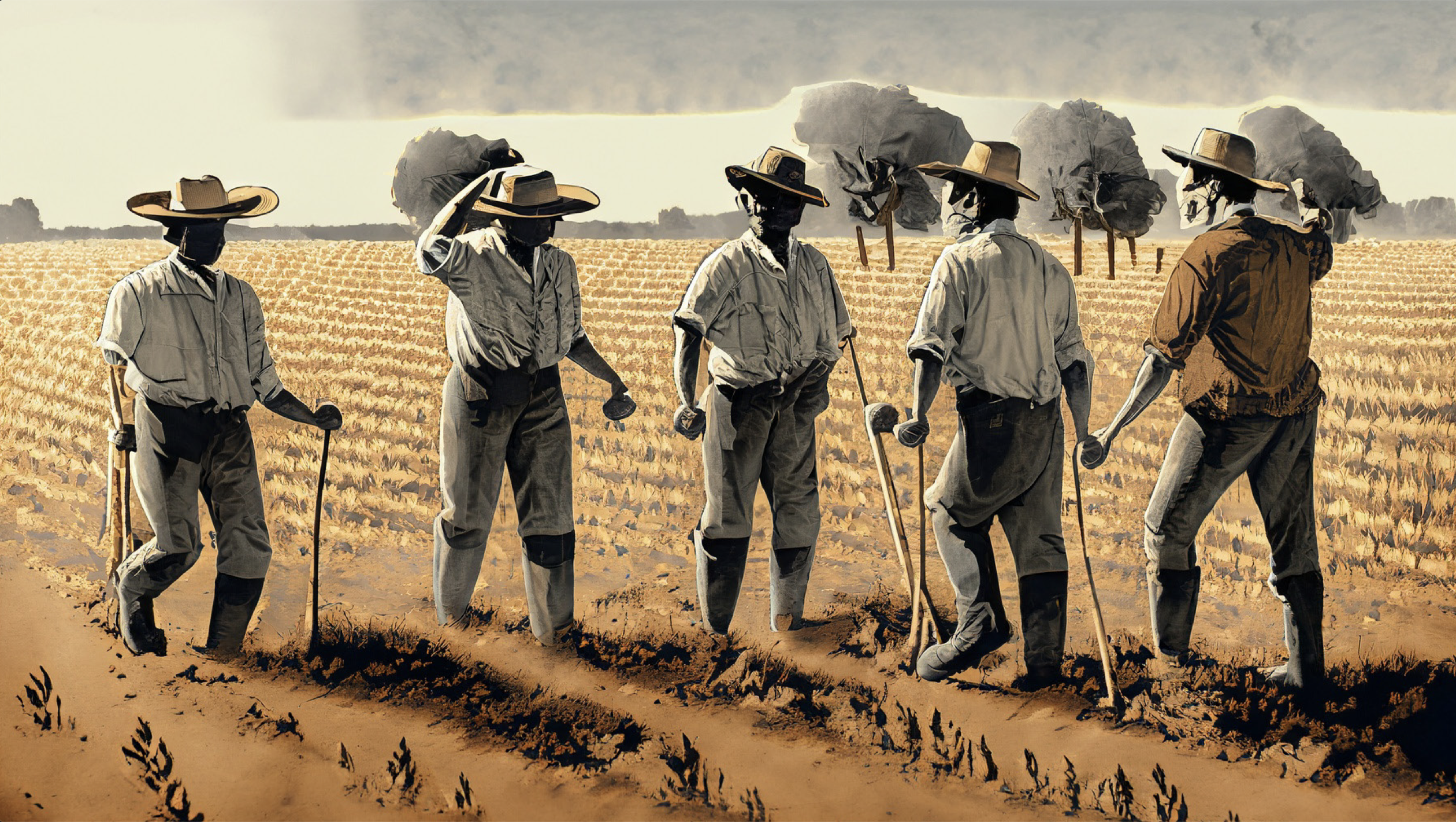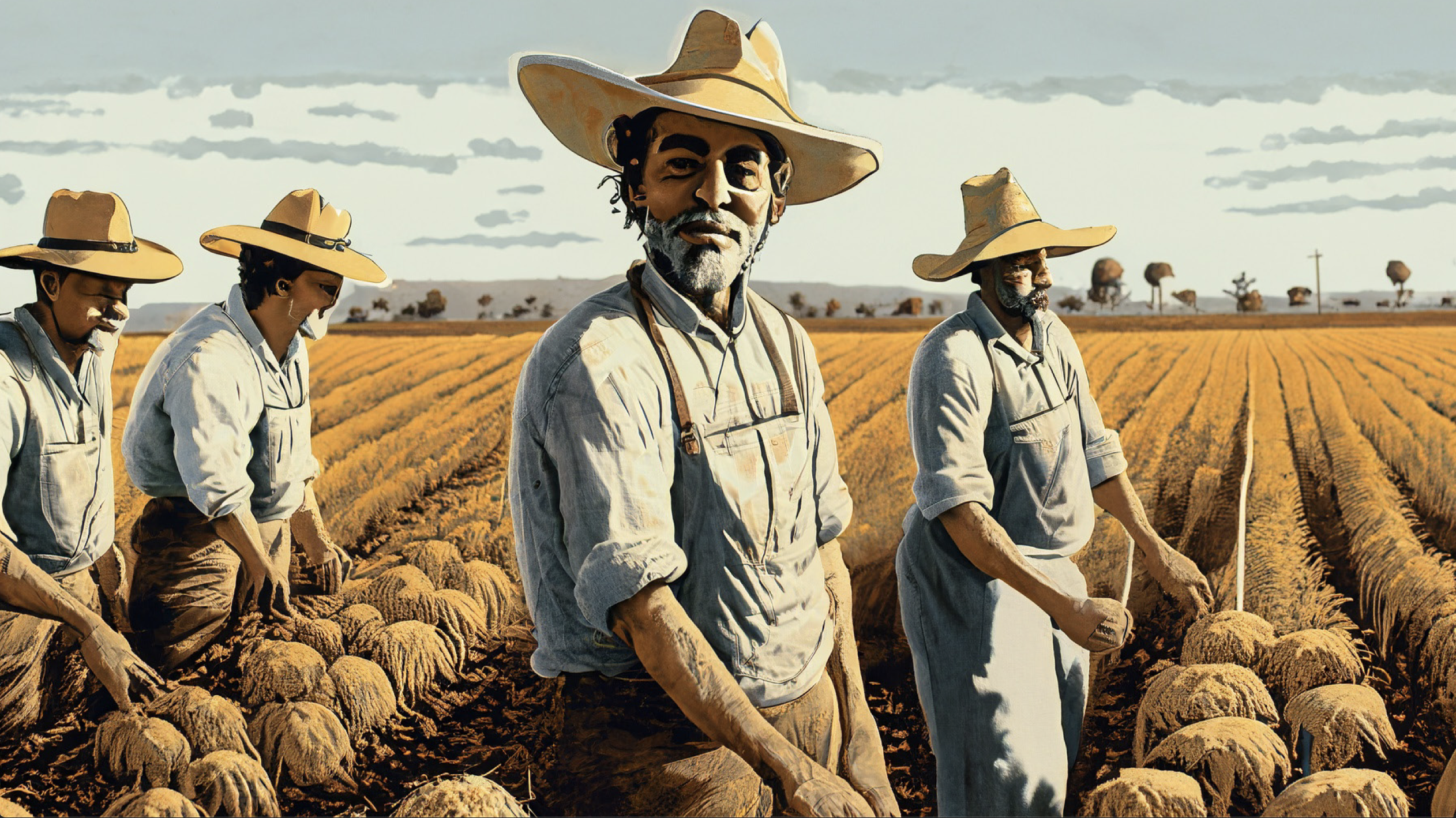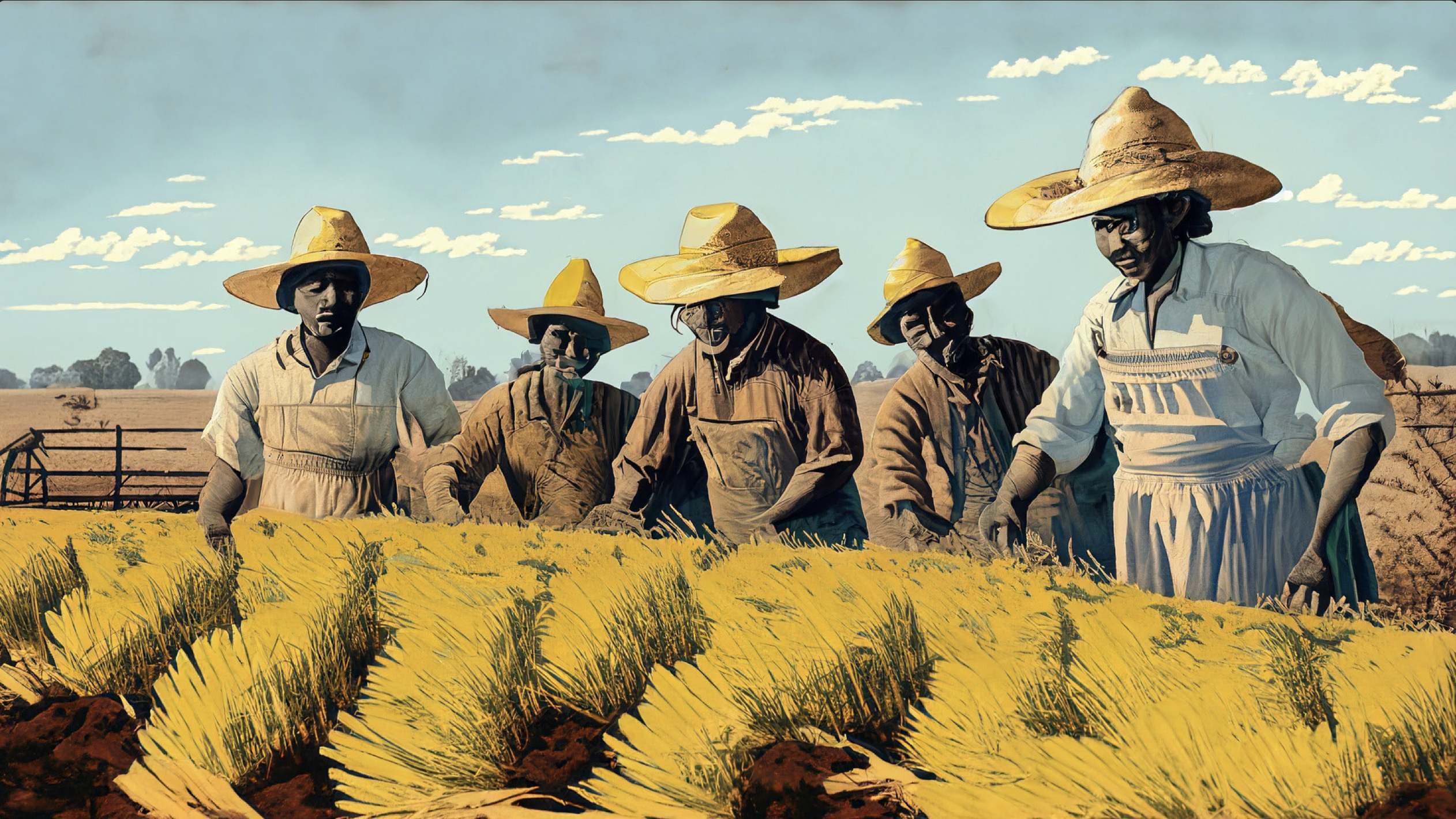In 2019, Los Angeles Councilman Jose Huizar unveiled a statue of a worker holding a hoe, a back-breaking tool popularly referred to as el cortito (the short one), which requires bending low to cut crops.
Next to him stand his wife and a child, whose outstretched hands can’t seem to reach the ever-absent migrant father. This statue, named the Bracero Monument, commemorates the labor and sacrifice of millions of Mexican migrant workers who came to work in the U.S. as part of the Bracero Program that spanned more than 20 years.
When immigration reform is discussed, the controversial Bracero Program often comes up to explain the historical context of immigration flows, to argue in favor of a new binational labor agreement, or to give an example of a failed approach that should not be repeated. The main facts that help us understand its impact and legacy are summarized here.

1) What was the Bracero Program, and when was it implemented?
The term “Bracero” means a person who works with his arms – brazos; someone who does physical labor, such as a field hand. The Bracero Program refers to a series of federal agreements and laws that provided legal, temporary employment to approximately 4.5 million Mexican migrant workers between 1942 and 1964, mainly in agriculture, but also in mines and railroads. Workers were generally given 6-month contracts (which could be re-issued), and sent to work in states across the country, although the majority were in California, Texas, New Mexico, Arizona and Oregon. According to migration analysts, the Bracero Program was the most significant temporary guest-worker program in the world, due to its size and duration.
The Bracero Program can be divided into three distinct stages: 1942-47, 1947-54, and 1955-64. The first of these was marked by binational cooperation, while the second brought to light contradictions and unintended consequences, and the third consisted of growing opposition, ad hoc legal frameworks and the final unravelling of the program.

2) Why did Mexico and the U.S. formulate this binational program?
In political terms, the Bracero Program began as an example of cooperation between both countries. In the context of WWII and the U.S. “Good Neighbor” policy towards Latin America, the U.S. wanted to strengthen ties with Mexico by making amends for the mass expulsions of Mexican workers during the post-depression 1930s. The Mexican government, in turn, wanted to show its support for the U.S. war effort to gain leverage for future binational negotiations.
In economic terms, the recruitment of soldiers abroad during WWII left the U.S. with an immediate need to fill vacant jobs in essential, labor-intensive areas. At the same time, rapid U.S. industrial development – both during and after the war – meant that American workers were shifting towards higher-paid factory jobs, leaving a gap in agriculture that required an influx of low-skilled laborers. The Mexican government wanted to provide opportunities abroad for a growing population that could not be accommodated in the national labor market; it also felt that regulated, temporary agreements would control ongoing irregular migration flows and ensure the return of valuable laborers, who would have acquired new skills in the modernizing U.S. agricultural sector.

3) How did the Bracero Program affect immigration flows from Mexico, and immigration policy?
Given that Braceros were not allowed to settle in the U.S. due to their temporary contracts, they kept coming and going from their home communities, creating strong transnational social networks that migrants could rely on to enter the U.S. In addition, the demand for workers on the part of the U.S. producers, as well as the supply of Mexican applicants, was greater than the reduced quota of workers that could officially be recruited through the Program. Employers - who did not want to comply with the Program’s provisions for fair wages - and workers - who were desperate for employment - thus found ways to bypass the system. As a result, the Bracero Program spurred the parallel entry of an estimated 5 million undocumented migrants during this 22-year period.
In an attempt to control this flow, unauthorized migrants (known pejoratively as “Wetbacks”) were sent back to border recruitment centers where they could apply for re-entry as Braceros. These patchwork solutions – referred to as “Dry Out” practices - were eventually opposed, and anti-immigrant sentiment led to sweeping border patrol raids known as Operation Wetback, which deported more than 1 million undocumented workers in 1954.
During this same period, however, Congress passed the Immigration and Nationality Act (1952), which established a quota system that favored Mexicans; it also facilitated entry for family members of U.S. residents. The Act made harboring and supporting undocumented migrants a felony, but it did not penalize employers for hiring undocumented labor – a concession to powerful Texas producers known as the infamous “Texas Proviso”. Thus, the Act led to the overall exponential growth of Mexican immigrants in the U.S., both documented and undocumented.

4) Did Braceros have labor rights? Why did the Mexican-American labor movement oppose the Bracero Program?
In the first period of the Program, the Mexican government formulated the terms of the agreement according to Mexican labor laws, which were progressive for their time. Thus, workers who took part in the program were guaranteed housing, transportation, medical care and a wage equivalent to that paid to other agricultural workers in the same sector and region. They were also assured a pension, through a 10% deduction of their monthly salaries that was saved in a fund.
This changed in the second period, however. In 1951, Public Law 78 reauthorizing the Bracero Program was passed by Congress, establishing a minimum wage for Braceros, but rejecting the recommendations of President Truman’s Commission on Migratory Labor, which suggested that the same minimum wages should be established for American and Mexican workers, and that all farm workers should be given union organizing rights. In addition, according to PL78 the U.S. government stopped functioning as the main employer, leaving contracts up to individual producers. This led to more violations of labor protections, and to increased hiring of undocumented workers.
Over time, many U.S. employers stopped honoring the terms of the agreement altogether, which had clearly stipulated that Braceros should not be used as strike-breakers or fill jobs for which American workers were available. The overall surplus of cheap labor meant that agricultural wages were lowered, and workers had less bargaining power. Thus, the Bracero Program, and Mexican immigrant labor overall, was opposed by the Mexican-American labor movement, including Cesar Chavez of the United Farm Workers. The increasing influence of workers’ rights movements and the opposition of the Kennedy administration finally led to the end of the program in 1964.

5) What is the overall legacy of the Bracero Program?
The Bracero Program had a series of consequences that undermined its initial intentions and created rifts between the Mexican and U.S. governments, and between Braceros and Mexican-American workers unions. The inability of both governments to continue framing adequate laws and the powerful influence of U.S. agricultural producers contributed to creating a contradictory, “broken” immigration system that persists today. On the one hand, Mexican workers were encouraged to work in the U.S. and hired both legally and illegally – with no sanctions for employers; they were also given favorable quotas within the 1952 immigration law, providing entry to family members and strengthening migrant networks. On the other hand, however, they were denied basic labor rights and deported in constant raids to pacify anti-immigrant sentiment.
Nonetheless, the Braceros who took part – officially or unofficially - undoubtedly contributed greatly to agricultural production and the maintenance of basic infrastructure, supporting the growth of the U.S. economy during these years. Their hard work also supported their families back home, albeit at the cost of immense sacrifices and often exploitative conditions. Ultimately, Braceros’ individual stories of determination, perseverance and sacrifice provide life lessons that have been passed down to their children and grandchildren. These stories are part of the heritage of many Mexican-Americans across the nation, and deserve to be remembered. In the words of L.A. Councilman Jose Huizar, whose father and uncles were Braceros, “it is important that we honor them, their hard work and their contributions to this country.”
Consultant for this article: Adriana Alcantara
References and resources
Philip Martin, “Mexican Braceros and US Farmworkers”, Wilson Center Farm Labor and Rural Migration News Blog, July 10, 2020, at: https://www.wilsoncenter.org/article/mexican-braceros-and-us-farm-workers
E. Fernández Guzmán, “Más allá de eventos coyunturales. La migración México-Estados Unidos: un fenómeno de larga duración”
Rafael Alarcón, “US Immigration Policy and the Mobility of Mexicans”
Alene Tchekmedyian, “Monument honoring ‘braceros,’ Mexican migrant workers, unveiled in downtown L.A.,” Los Angeles Times, 29 September 2019, at: https://www.latimes.com/california/story/2019-09-29/migrants-bend-plaza-bracero-monument
Bracero History Archive, at: https://braceroarchive.org/
Library of Congress Research Guide – 1942: Bracero Program, at: https://guides.loc.gov/latinx-civil-rights/bracero-program
CUNY American Social History Project, Background Information about the Bracero Program, at: https://shec.ashp.cuny.edu/items/show/532